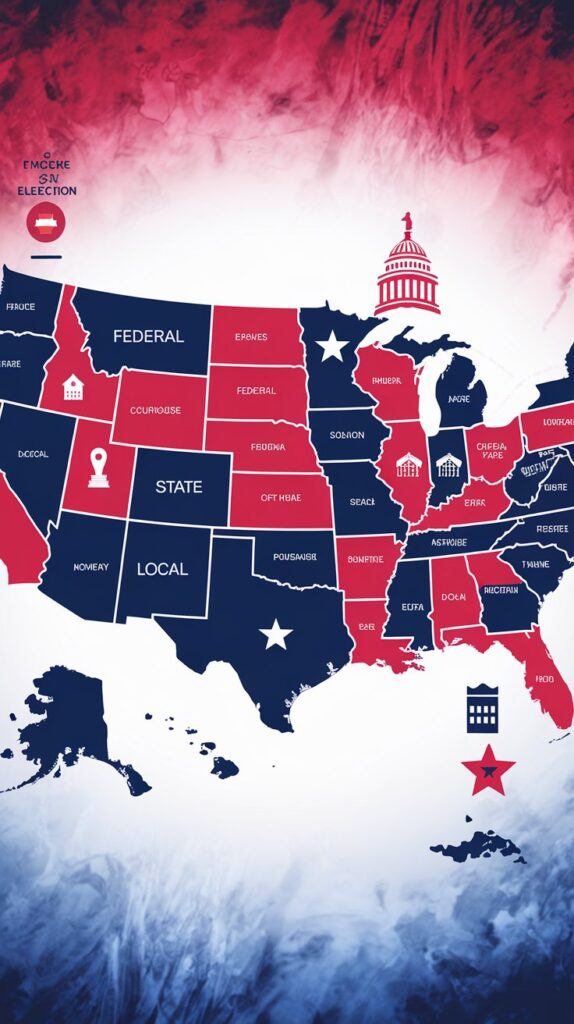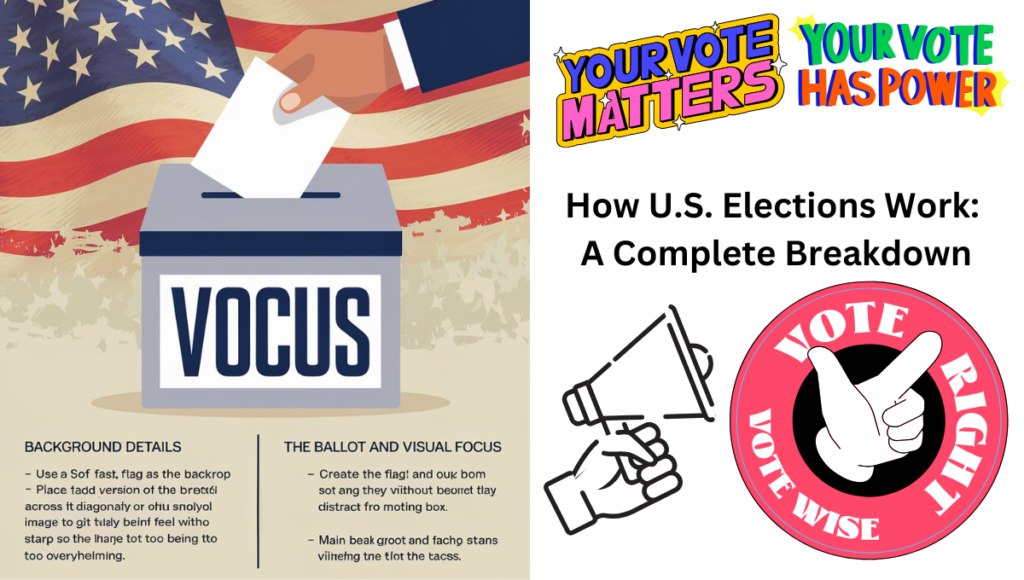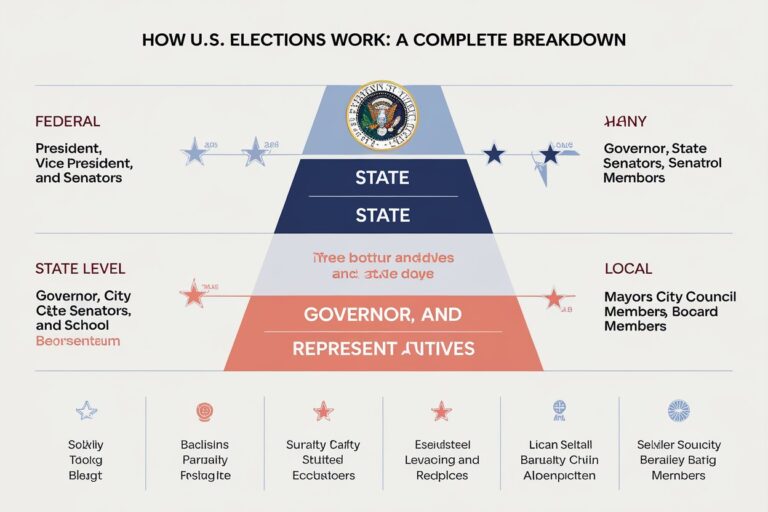The United States’ electoral system, as outlined in “How U.S. Elections Work: A Complete Breakdown,” is a pillar of its democracy, designed to ensure that power rests with the people. Whether it involves local elections or federal contests, the system incorporates layers of laws, checks, and balances to ensure fairness and transparency. Understanding how this system works is vital to appreciating the process through which Americans elect their leaders and shape policies. This blog provides a comprehensive breakdown of how elections function in the U.S., highlighting the intricacies of federal, state, and local elections.

Highlights
Federal elections decide leadership at the national level, while state and local elections manage governance closer to the people.
In presidential elections, the Electoral College is crucial.
Voting options include in-person, early, and mail-in voting.
Political parties use primary elections and caucuses to select candidates.
Modern challenges such as misinformation and voter suppression test the integrity of the system.
Introduction to How U.S. Elections Work
Elections empower citizens to select their leaders and influence policy decisions. Governed by the U.S. Constitution and state laws, the electoral process is designed to uphold fairness and transparency. “How U.S. Elections Work: A Complete Breakdown” showcases how voting is both a right and a responsibility, enabling citizens to shape the nation’s governance. However, voter turnout rates often vary based on election importance, accessibility, and public awareness.
Federal State, and Local Elections: The Structure of U.S. Democracy

Elections in the U.S. occur at three levels: federal, state, and local, each serving distinct purposes and addressing specific governance needs.
Federal Elections
Presidential Elections: Presidential Elections Held after every four years to elect the president and vice president of U.S.A.
Congressional Elections: Representatives are elected to two-year terms, while senators serve six-year terms.
State Elections
Governors, state legislators, and judicial positions vary by state.
Referendums allow citizens to vote directly on specific policies.
Local Elections
Focus on electing mayors, council members, and other officials responsible for community governance.
Local elections ensure representation at the grassroots level.
Primary Elections and Caucuses in How U.S. Elections Work

Before the general election, political parties use primaries and caucuses to select candidates.
- Primaries: Voters cast ballots for their preferred candidates.
- Open Primaries: Open to all voters, regardless of party affiliation.
- Closed Primaries: Restricted to registered party members.
- Caucuses: Party members meet to discuss and choose candidates. This method is less formal but encourages active participation.
The Electoral College Explained in How U.S. Elections Work

One special aspect of US presidential elections is the Electoral College. Each state’s electoral votes are determined by its representation in Congress (senators and representatives).
How It Works:
- Popular Vote: Citizens vote for electors pledged to their chosen presidential candidate.
- Electoral Votes: A candidate needs 270 out of 538 votes to win the presidency.
Controversies:
The Electoral College has faced criticism for enabling a candidate to win the presidency without securing the national popular vote, as occurred in 2000 and 2016.
How Voting Works in the U.S. Election Process
The U.S. voting system is made to meet a variety of purposes and preferences:
In-Person Voting: Traditional voting at designated polling stations.
Early Voting: gives people the opportunity to vote before election day..
Mail-In and Absentee Voting: Ensures those unable to vote in person can participate.
Each state has unique rules for voter registration, ID requirements, and ballot submission deadlines, ensuring flexibility but often leading to confusion.
Key Roles in How U.S. Elections Work

Several entities play critical roles in the electoral process:
- Election Officials: Manage logistics, ensure compliance with laws, and count votes accurately.
- Political Parties: Mobilize voters, fund campaigns, and advocate policies.
- Media and Pollsters: Inform the public and provide election-related data.
Election Timeline: How U.S. Elections Work from Start to End
The U.S. election cycle is a lengthy process involving multiple stages:
1. Year Before the Election: Candidates announce campaigns and begin fundraising.
2. Primaries and Caucuses: Conducted from February to June.
3. Conventions: Parties formally nominate candidates during the summer.
4. General Election : Every four years, on the first Tuesday in November, there is a general election.
5. Electoral College Vote: Electors cast their votes in December.
6. Inauguration Day: On January 20, the newly elected president assumes office.
Challenges in How U.S. Elections Work
Modern elections face numerous challenges that test the resilience of the system:
Voter Suppression: Laws or practices that make voting difficult for certain groups.
Misinformation: False information spreads rapidly online, influencing voter perception.
Election Security: Safeguarding systems against cyberattacks is a growing concern.
Efforts to address these challenges include voter education campaigns, legal reforms, and advancements in technology.
Conclusion:
How U.S. Elections Work: A Complete Breakdown” illustrates the dynamic blend of tradition and innovation in the U.S. electoral process. By balancing federal and state powers with the will of the people, it ensures democratic governance. While challenges persist, the system evolves to uphold its core values, reflecting the aspirations of a diverse and ever-changing nation.
Please Click HereFor Complete Information on U.S.A President Election 2024
Author: allykazmi
